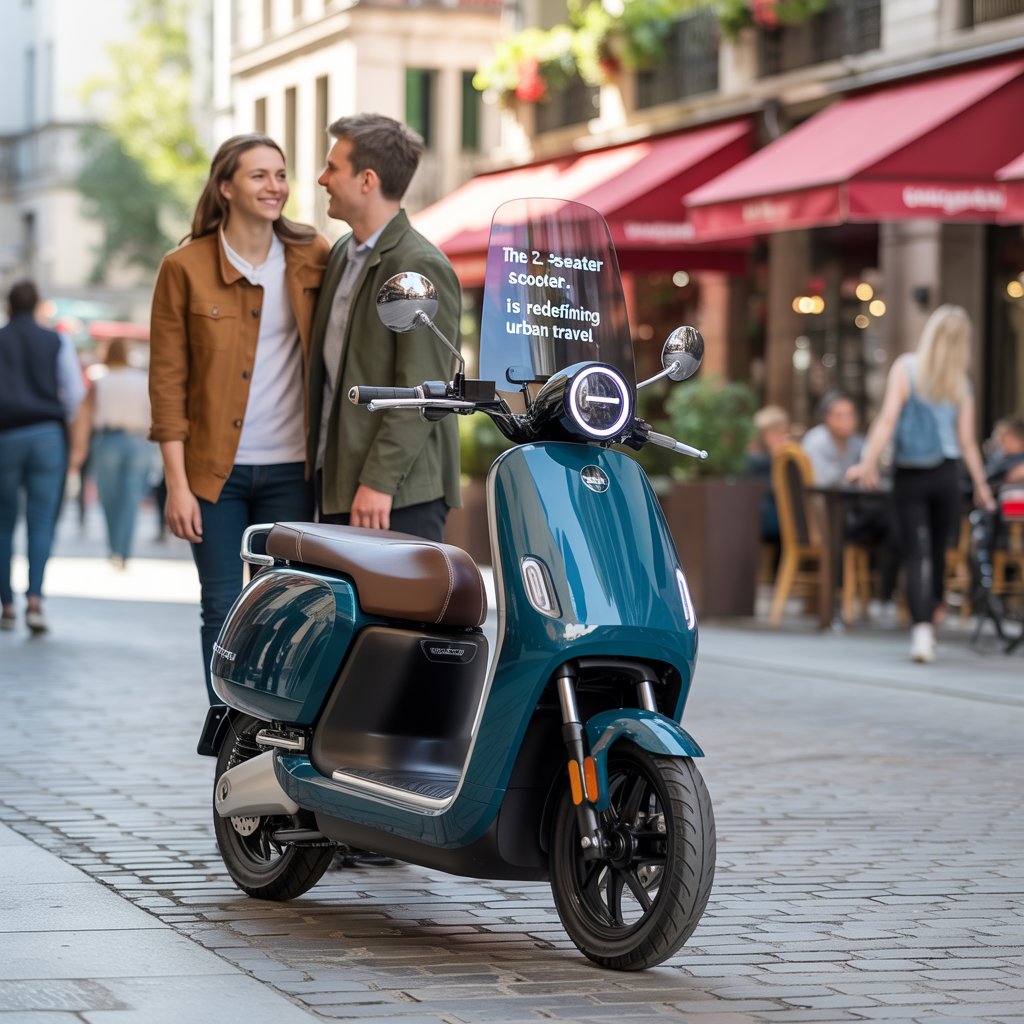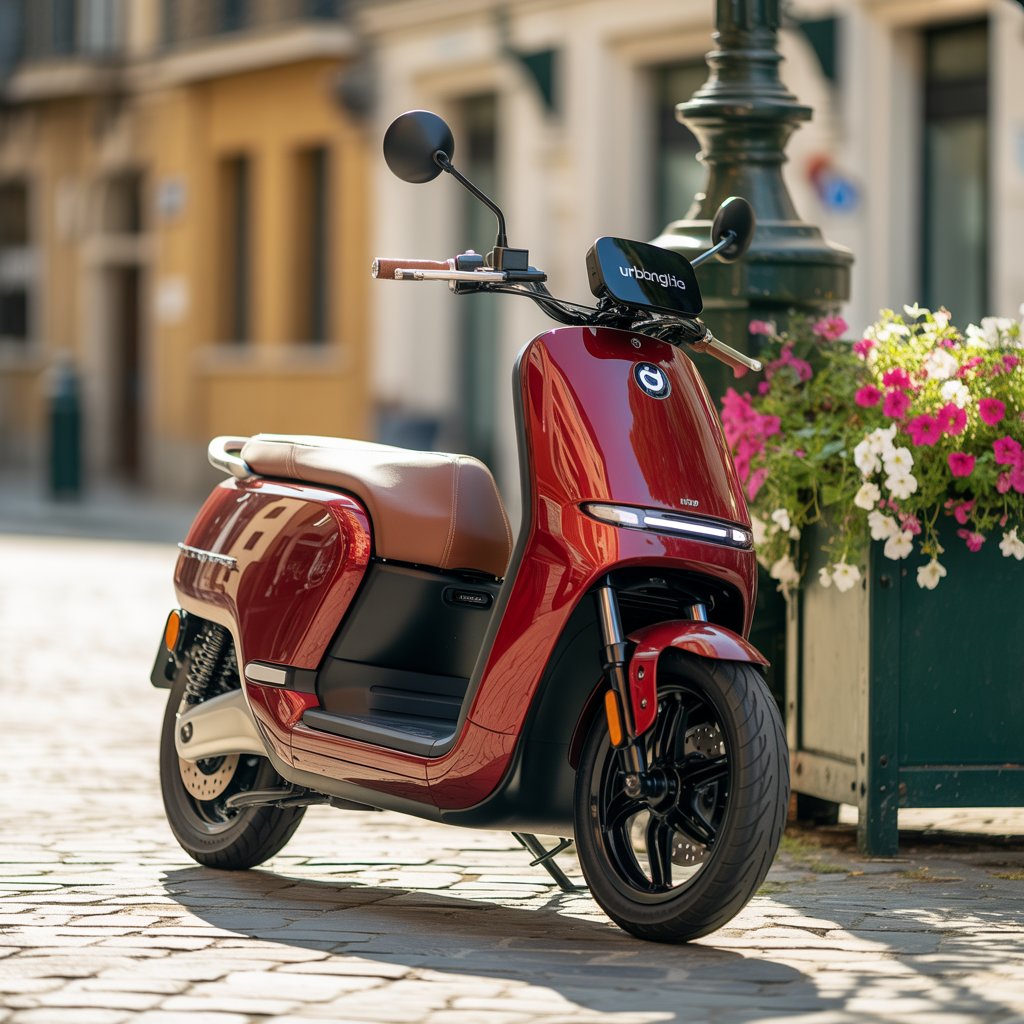
The Revolution on Two Seats
The modern world is rethinking mobility, and nowhere is this shift more evident than in The Rise of the 2 Seater Scooter. Long seen as the minimalist’s ride — one seat, one engine, one rider — scooters have undergone a quiet but powerful evolution. The one-seater archetype is now giving way to versatile, robust, and passenger-ready two-seaters that aren’t just changing traffic — they’re changing lifestyles.
This isn’t just an upgrade in mechanics. It’s a transformation in purpose.
As families seek affordable alternatives to cars, couples crave freedom without breaking the bank, and cities demand cleaner, leaner mobility — the 2-seater scooter emerges as the answer.
Let’s dive into why this isn’t just a trend, but a transportation revolution packed with logic, value, and cultural impact.
1. Scooters No Longer Ride Alone: The Shift in Purpose
Traditionally, scooters were designed for solo city commuting. Their light frames, small engines, and compact builds served that function well. But that’s no longer enough. The world has changed:
- Shared lifestyles mean vehicles now serve dual roles.
- Urban congestion makes car travel frustrating and expensive.
- Fuel and environmental awareness demand efficient alternatives.
This trifecta created fertile ground for The Rise of the 2 Seater Scooter. Engineers, designers, and manufacturers are now prioritizing multi-purpose use: a ride that handles your daily commute, weekend outings, shared errands, or an evening cruise with your partner.
The second seat isn’t just a seat. It’s a symbol of expanding utility.
2. Engineering for Two: The Invisible Work Behind the Comfort
Designing a true two-seater scooter isn’t as simple as stretching the seat. Real two-rider comfort requires a reimagination of the scooter’s very skeleton — frame geometry, balance distribution, weight tolerance, engine torque, and vibration dampening.
What’s been added under the hood?
- Reinforced chassis to hold an extra 100–120 kg of passenger weight.
- High-tensile suspension forks that adjust dynamically under load.
- Wider wheelbase to maintain traction while cornering with a pillion.
- Higher-capacity engines (125cc to 200cc) without compromising fuel economy.
Manufacturers now test these scooters on loaded rides during prototyping — something that was rarely done before. This means today’s 2-seater scooters are built to carry, not just cope.
3. Demographic Shifts: Who’s Riding With a Companion?
Understanding The Rise of the 2 Seater Scooter means studying who is adopting them. The trend cuts across age and purpose:
- Urban young couples in Tier 1 and Tier 2 cities Prefer 2-wheelers that enable spontaneous trips without calling an Uber or investing in two vehicles.
- Working parents in congested cities Drop off children, groceries, and parcels without needing a car.
- Gig economy professionals Food delivery riders and logistics partners increasingly rely on 2-seaters to carry an extra thermal box or co-rider for deliveries.
In India, Southeast Asia, and even parts of Southern Europe, dual-rider scooters are now outselling solo scooters in several segments.
4. The Unspoken Factor: Emotional Utility
Let’s shift gears — from data to emotion.
There’s something deeply human about riding together.
Whether it’s a couple on a weekend ride, a father dropping his child off at school, or two friends heading out to explore, a 2-seater scooter enables shared moments. Unlike cars, which enclose and isolate, scooters are open, airy, and connected.
You feel the wind, the road, and the person riding with you.
This emotional utility is a quiet engine powering The Rise of the 2 Seater Scooter. It’s not just about cost and convenience — it’s about closeness.
5. Redefining Urban Travel Economics
You might think a 2-seater scooter consumes more fuel or requires more maintenance. But the opposite is often true.
Consider this:
- A Honda Activa 125cc 2-seater gives up to 50–55 km/l, while allowing two people to travel.
- Daily use by a single person + occasional pillion rides = maximum utility.
- Monthly savings in cities like Mumbai or Los Angeles (versus owning a car): $180–$350.
For price-conscious markets, owning one scooter that solves multiple transportation needs — without registration and insurance hassles of cars — is a game-changer.
Even in wealthier regions, young adults are switching from cars to scooters as cities clamp down on vehicle congestion and emissions.

6. The Green Side of Going Two-Up
Scooters already offer better fuel economy and fewer emissions than most cars. But 2-seater variants double their environmental impact by enabling ride-sharing without increasing emissions.
Two riders. One engine. Half the carbon footprint per person.
This fits perfectly into the growing global climate conversation.
Countries like Italy and Vietnam now offer tax rebates for e-scooter models with extended seating, and electric manufacturers are rapidly releasing 2-seater variants with regenerative braking, smart battery systems, and removable packs.
The Rise of the 2 Seater Scooter is also a rise in green responsibility.
7. Breaking Myths About 2-Seaters
There are still lingering myths that stop some people from embracing these scooters. Let’s bust a few:
| Myth | Reality |
|---|---|
| Two-seaters are bulky | Most are just 10–12% longer and still fit in tight spaces. |
| They cost more | The price difference is often under 8–10%, and the value is doubled. |
| They reduce mileage | Minimal impact due to efficient engines and smart weight design. |
| Only for couples | Used by parents, friends, co-workers, and delivery professionals. |
These misconceptions are fading fast — and so is the old notion of scooters being “just for one.”

8. Tech Upgrades: Smart Scooters for Smart Riders
Today’s 2-seater scooters don’t just carry more — they do more.
Brands like Ather, TVS, Vespa, and Yamaha are integrating features that put these scooters on par with smart devices:
- Digital dashboards with GPS and turn-by-turn navigation
- Mobile sync for call/SMS alerts on display
- Geo-fencing and remote lock via app
- Battery management systems in electric versions
These smart features appeal especially to tech-savvy, urban riders who demand more than just motion.
9. The Global View: Countries Fueling the Trend
Though India is leading in volume, several countries are witnessing rapid adoption of 2-seater scooters:
- Vietnam & Thailand: Dominant transport mode; over 65% are 2-seaters.
- Italy & Spain: Tourism-driven demand, especially rental scooters.
- Philippines: Used for “habal-habal” (bike taxis).
- USA: College towns and suburbs adopting shared electric 2-seaters.
By 2028, experts estimate that 2-seater variants will make up 62% of all scooter sales globally.
This isn’t a niche anymore. It’s becoming the norm.
10. Real Stories Behind the Seats
Let’s humanize this even more:
Rita & Arjun – Mumbai
Bought a 2-seater scooter after ditching their secondhand car. “It’s how we grocery shop, drop our kid, and even date,” they laugh.
Kyle – Austin, TX
Rides a Vespa with his roommate to campus and work. “We split gas, split maintenance, and save at least $250/month.”
Alba – Milan
A tour guide using a 2-seater electric scooter to give short heritage rides to couples in the old town. “They love the openness and charm.”
These stories reflect how a simple mechanical feature — a second seat — can weave into people’s lives.
Conclusion: Why This Isn’t Just a Trend
The Rise of the 2 Seater Scooter isn’t a marketing gimmick or a temporary blip in mobility. It is a smart, emotional, economical, and ecological shift. It answers questions modern cities are asking:
- How do we reduce traffic without losing freedom?
- How can families move better on a budget?
- How do we align lifestyle and environment?
With intelligent design, versatile purpose, and real-world usefulness, the 2-seater scooter is writing the next chapter of two-wheeled travel. And for millions, it’s already become the vehicle of choice — not just because it moves people, but because it moves with people.









